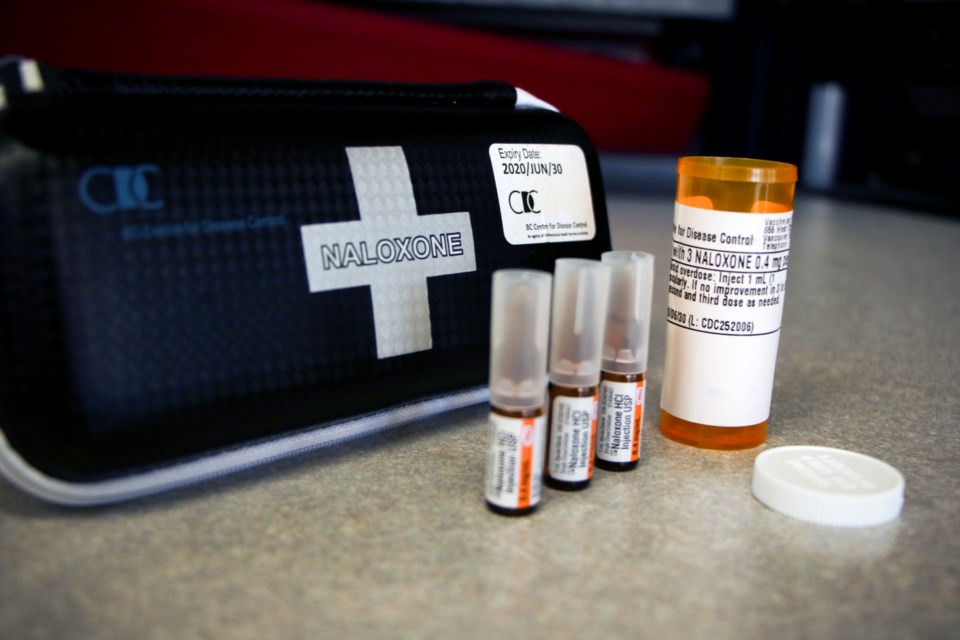The overdose crisis is far from over, even as the rate of overdose deaths saw a dramatic drop in the first half of 2019, says one New Westminster front-line worker.
Nine people died of overdoses in New West in the first six months of the year, according to recently released data from the B.C. Coroners Service, a rate of about one-and-a-half per month. That’s around half the rate of fatal overdoses seen in New West in 2018 – 35 overdose deaths last year made for a rate of nearly three per month.
Throughout the province, the drop in overdose deaths is closer to 30 per cent, with 538 deaths as of June 30.
Jody Koinoff, an outreach worker with the Lookout Society, says she’s thankful there are significantly fewer people dying, but she adds that there’s little to signal an end to the crisis.
That’s because the decline in deaths isn’t being caused by a decline in overdoses, but rather by an increase in life-saving measures.
“It kind of throws you into believing [things are improving], but no, things are actually the same, if not a higher amount [of overdoses]. But thank God the deaths have gone down; that’s great,” Koinoff said.
According to the latest data from Fraser Health, the first three months of 2019 saw a five per cent decrease in the number of ambulance calls to overdoses in New West. Throughout the Fraser Health region, the rate of ambulance calls for overdoses actually increased by 18 per cent.
For those who are surviving overdoses, however, Koinoff says the consequences can still be devastating.
“There’s a lot of them that have brain damage because of it and can’t function,” Koinoff said. “So there’s a lot of statistics that aren’t in the coroner’s report.”
Koinoff notes that the number of overdoses goes beyond ambulance visits, too, with many people not calling 911 for overdoses.
One of the factors driving the decrease in deaths is the widespread availability of overdose-reversing drug naloxone, said Koinoff, who recently received training to teach people how to use naloxone.
“That’s a big difference. The pharmacies were charging 40-some bucks for them, but now they’re free,” Koinoff said. “So it’s things like that that have dropped the numbers of deaths.”
Another factor, she said, is measures like the Good Samaritan Drug Overdose Act, which bars police from arresting anyone for simple possession of drugs at the scene of an overdose, and recent policies by some police forces not to attend overdoses unless they are fatal or if requested by first responders for safety reasons.
Those measures have been touted as removing barriers for drug users to call 911 in the event of an overdose. But many drug user groups and advocates are calling for full decriminalization of substance users and for a safe supply of drugs like heroin for those trapped in their substance use disorder.
Koinoff says she would like to see prosecutions stepped up for high-level suppliers whose drugs are tainted with fentanyl, the high-potency opioid that precipitated the current overdose crisis.
“I’m talking about the big ones who’re found with kilos and the ones that are selling, and knowing [fentanyl is] in there and selling to people.”



